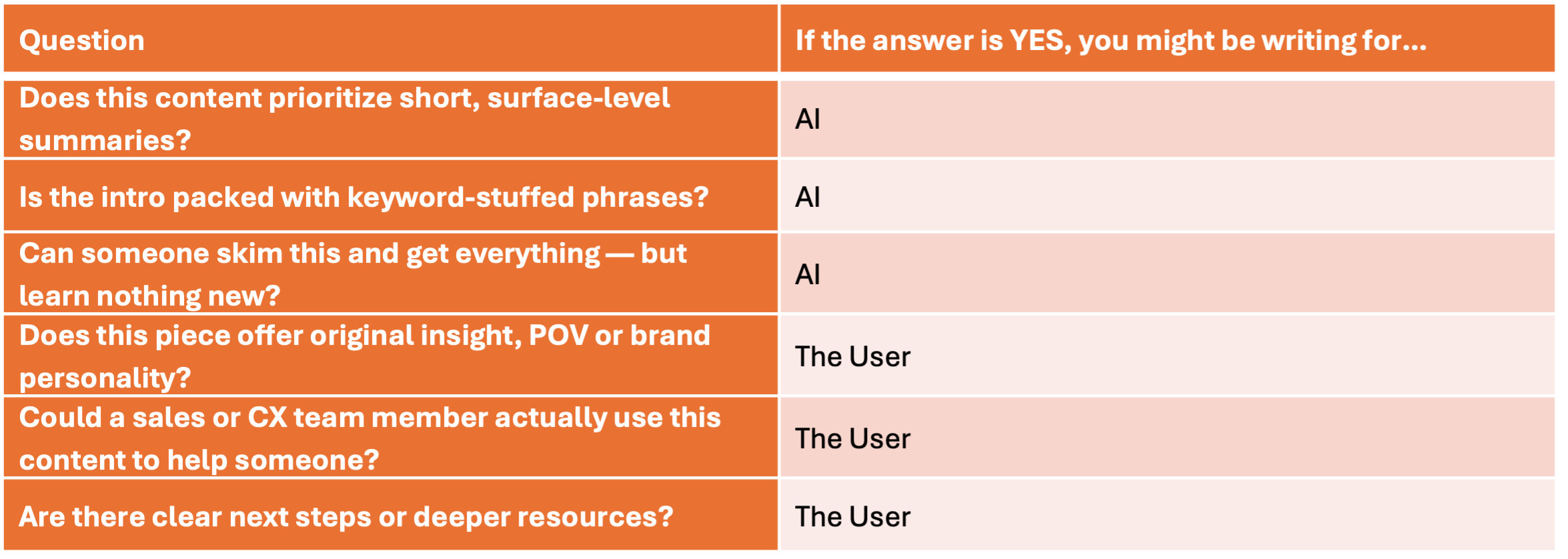“This is your last chance. After this, there is no turning back. You take the blue pill … the story ends, you wake up in your bed and believe whatever you want to believe. You take the red pill … you stay in Wonderland, and I show you how deep the rabbit hole goes.”
— Morpheus, The Matrix
Welcome to the age of AI Overviews.
If you’re a content strategist, SEO lead or marketing decision-maker, you’re already feeling the shift. Google’s AI-generated summaries now dominate the top of many search engine results pages (SERPs), answering queries before users ever see a traditional link. Cue the existential questions. Is organic content still worth it? Are clicks dead? Should we rewrite everything for AI?
Here’s the thing: this is our Matrix moment. We can take the blue pill — optimize everything for the algorithm, chase the summary spot and reduce content to keyword fodder. Or we can take the red pill — see AI Overviews for what they are and choose to put the user back at the center of our strategy.
The Blue Pill: Feeding the Machine
The blue pill approach is tempting. You might already be hearing it in meetings:
- “Let’s reverse-engineer the language AI uses.”
- “How do we get featured in the Overview box?”
- “Can we just summarize our whole blog in the meta description?”
This mindset treats AI Overviews like a new form of SEO. It’s all about appeasing the system. And sure, there’s short-term value in understanding how Large Language Models (LLMs) digest content. You should be auditing your site’s structure, answering key questions clearly and making sure your schema markup is tight. We even have a blog that lists our best zero-click content tips.
But here’s the problem: the blue pill approach centers on the machine, not the human. It assumes the end goal is to be summarized — not to connect, convert or create lasting brand affinity.
It’s optimization without strategy. Reaction without reflection. And it’s not sustainable.
The Red Pill: Embracing Change, Keeping the User
Taking the red pill means facing a harder truth: we don’t control how AI Overviews behave. The algorithms are opaque, experimental and constantly evolving. But we do control how we show up.
And that starts with staying user-first, even in an AI-first landscape.
Let’s reframe:
-
- AI Overviews aren’t the enemy. They’re the new front door. Often, they act as the skim layer before users dig deeper. If your brand is summarized there, great. But what’s beyond the summary? What happens when someone clicks through?
- Content still matters — a lot. AI may crawl and stitch, but it doesn’t tell stories. It doesn’t know your voice, your nuance, your differentiators. Deep content builds trust. It builds brand. It drives action.
- We need to write for humans who live in an AI world. That means clarity, but also originality. Insight. POV. The kind of content that can’t be summarized in a neat little paragraph because it’s genuinely useful, inspiring or challenging.
In other words: let’s stop creating content just to be skimmed by AI and start focusing on what real people need, think and feel once they land on our page.
Related Content: Inside Simantel’s Human-Led, AI-Assisted Approach to Marketing
Strategy in the New World
So how do we adapt without losing our soul?
-
-
- Answer the question — then go deeper. Be clear and direct up top. But give users a reason to keep reading. Layer in your expertise. Provide next steps, case studies or frameworks that AI won’t (yet) replicate.
- Design content ecosystems. AI Overviews flatten nuance. Your strategy shouldn’t. Use clusters of content — articles, tools, videos, webinars — to surround a topic with depth and dimensionality.
- Build content for your audience, not just the AI-fed one. Go niche. Go human. Create for your customers, your prospects, your partners — not just “the searcher.”
- Make brand the moat. Your voice, visuals and values matter more than ever. AI can’t replicate your brand’s personality. Use that to your advantage.
- Measure what matters. Traffic may dip. Click-throughs may change. But if engagement, conversions and brand lift are holding strong? You’re doing it right.
-
Quick Gut Check: Are You Writing for AI or for the User?
Final Thought: AI Isn’t the Oracle
This isn’t a rejection of AI. It’s a re-centering of strategy. When you write for the user first, good things (including AI visibility) tend to follow. We’re not here to out-game the machine. We’re here to build connections, solve real problems and help people make better decisions. AI Overviews might summarize our content, but they’ll never replace the intent behind it.
So, which pill will you choose?
If you’re ready to create content that resonates with humans and earns trust with AI, reach out. We’d love to help.





